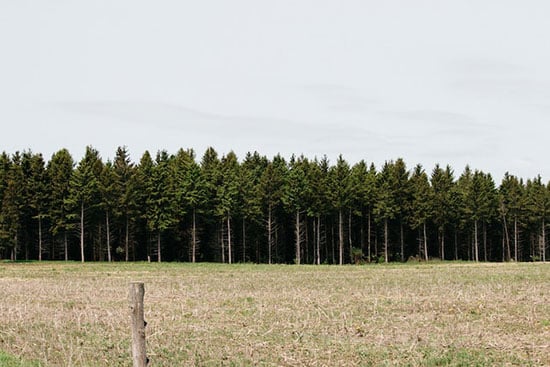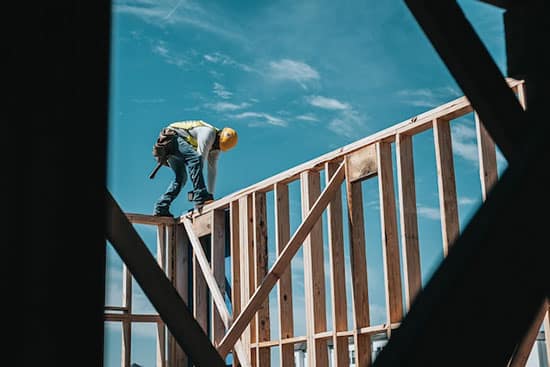Why Is Wood So Expensive? We’ve Got Answers.
The beauty, versatility, and timelessness of wood are apparent almost everywhere, whether you’re walking through an old-growth forest, admiring a historical log cabin, or perusing a brand-new home.
But the truth is that, lately, despite its timeless charm and versatility, wood seems less and less accessible. In fact, it’s become quite expensive.
The primary question to ask here is, Why? What about wood has made it so expensive lately?
That’s exactly the question this article is going to answer. You’ll learn about:
- The value of wood in today’s market
- Factors that influence wood prices
- How checking wood moisture can help keep your costs low
Let’s get started with a glimpse into what about wood as a material makes it so valuable.

When responsibly forested, wood can be grown and harvested over and over again.
The Value of Wood in Today’s Market
Wood has been a constant for humanity as far back as history can record. It continues to be one of the most valuable building materials today.
It’s versatile. It can be used for multiple projects, from furniture, to art, to flooring, to entire buildings.
It’s beautiful. It comes in a variety of designs, tones, and textures. Plus, it works with a variety of design styles.
It’s long-lasting. With proper care, wood furniture, flooring, and artistry can last generations.
And one of the biggest reasons why wood continues to be such a valuable material is because it’s a renewable resource.
According to the UC Green Building Council, “Unlike many building materials…wood does not deplete the earth of its natural resources. Because it’s a resource that more or less stands on its own, it can be grown and harvested over and over again.”1
So, with responsible forestry practices, we can continue building and using wood for generations to come.
Now that we’ve considered the value of wood, let’s break down some of the factors that influence wood prices.
Factors That Influence Wood Prices
It can be hard to pinpoint just one or two things that have made wood more expensive in recent years. As you look at this list of several factors, keep in mind that a mixture of them, rather than just one factor, usually influence wood prices.
Let’s get started.
Wood type and quality
This might seem like an obvious one, but wood type and quality are more than just what kind of wood it is and how good it is. Rather, there are typing systems and grading systems that help to determine the price of a given cut of wood. Those factors are:
- Hardwoods vs. softwoods
- Exotic and rare woods
- Wood quality and grading systems
Hardwoods vs. softwoods

Pine trees are some of the most commonly used softwoods.
Hardwoods are generally deciduous trees (think oak, hickory, walnut, poplar). They tend to grow slowly and produce—you guessed it—harder, denser timber.
Softwoods, on the other hand, are generally conifer trees (pine, cedar). While they do grow much faster than hardwood trees, they have less dense, softer timber.
Depending on the wood you choose, you’ll see a notable difference in price. Hardwoods are almost always going to be more expensive than softwoods. Here are some reasons why:
- Hardwoods take longer to grow and are more expensive to cultivate.
- They are more fire resistant than softwood (because they have fewer air pockets).
- They are more durable and resistant to scratches and dents.
Even within the hardwood category, though, some types of wood are “harder” than others. For example, mahogany is harder than oak, making it more expensive.2
Because of this price difference, harder woods are usually used for smaller-scale projects, like cabinets, flooring, and furniture, as opposed to framing, which requires much more wood.
Exotic and rare woods
How rare a type of wood is and where it’s grown also have a large impact on its price. Rare and exotic wood, for example tigerwood, is more expensive, not just because it often boasts interesting colors and grain patterns but also because it’s scarce, difficult to grow, and more complicated to transport. After all, many types grow in South America, Africa, and Asia.
For example, African Blackwood—one of the most expensive species of wood in the world—is extremely hard and dense. While it’s stable, warp-resistant, and extremely durable due to its density, it’s also difficult to produce and is a threatened species.
For many of these exotic species, demand is high, but supply is low. And many of them are on their way to becoming extinct, such as Sandalwood and Lignum Vitae.
Wood quality
Did you know that wood has different grades? And the grade of the wood will impact its price as well. Naturally, the higher the quality of the wood, the higher the cost. Different types of wood—soft or hard—have different grading systems.
The hardwood grading system goes as follows (from highest quality to lowest):
- Firsts and Seconds (FAS)
- Selects
- Number 1 Common (No. 1C)
- Number 2A Common (No. 2AC)
And these grades are usually determined by the amount of wood that is clear of defects and how long of a cut a log can yield. For example, for FAS wood, boards must be at least 6” x 8” and must yield 83 ⅓ % to 100% clear wood.3
This grade of wood is often used for large pieces of furniture or long moldings. Anything that requires long, defect-free pieces of wood. The lower grades, on the other hand, can be used for anything from kitchen cabinets to furniture parts to plank and strip flooring.4
The softwood grading system is a bit different. Softwoods are graded on a scale of 1–4, with 1 having the least amount of defects and 4 having the most. Softwoods graded as 1 are usually used to build furniture, whereas softwoods that are graded as 3 or 4 will usually be turned into crates, pallets, and other industrial wood products.5
Believe it or not, these are just some of the factors that influence wood prices. These particular factors don’t really change; they will almost always influence the price of wood. But in the past years, there have been even more factors playing into it. That’s where global supply and demand comes in!
Surging demand for wood

Homebuilding surged during 2020 and 2021
Let’s go back to Economics 101 class.
Supply and demand are two factors that work together to help determine the price of an item. When a product is in high demand, but the supply is low, that product is scarce, and the price increases. When supply is high, but no one wants the product (i.e. demand is low), then the price decreases.
Though simplified, this concept sums up a big part of why wood prices have gone up in recent years.
The beginning of 2020 is a great example of this. According to the Forest Service, “processed wood products, such as softwood lumber and plywood, nearly quadrupled. Wholesale prices for plywood increased from $400 to $1,500 per thousand square feet.”6
Why? Well, it’s multifactorial, but certainly, one of the reasons that prices increased is because demand surged. With the COVID-19 pandemic, most people found themselves spending more time at home, buying homes, and renovating their homes.7
Homebuilding has since surged even more, continuing to increase the demand for wood. So much so that the increase in lumber prices has added over $36,000 to the cost of a new single-family home.”8
Not to mention that many people started renovating and DIYing throughout their homes. Supply just simply couldn’t keep up!
Supply chain challenges
Demand is not the only reason why wood prices increased. Challenges in the supply chain of wood have helped to drive up wood prices, and none of these challenges occur in a vacuum. Each one impacts another, creating a domino effect of supply chain challenges.
So let’s discuss some of the challenges that have contributed to the increase in price.
For example, at the beginning of 2020, there was a worker shortage in the forest products industry. “This led to limited availability of wood products…. The domino effect continued with supply chains further disrupted by a lack of truckers to move materials.”9
And the lack of shipping capabilities hasn’t been limited to truckers. An overall shortage of workers has also constrained other imports from outside North America.
Several years later, there has been little recovery. The demand for wood is still high, as is the demand for housing. In time, the market may recover, yet there are still other factors that have impacted—and will probably continue to impact—the price of lumber.
Sustainability and responsible forestry
There has, in recent years, been an increasing concern for sustainability, and for good reason. But while sustainability and responsible forestry are essential, they do make production slower and more expensive.
Here’s why.
The key to responsible forestry is to find the balance between meeting consumer needs and preserving forests and the ecological balance they help to maintain. That also means protecting human rights, endangered species, and biological diversity, and respecting the land and the people that live there.
This requires further planning, finding and accessing responsible forest sites, and using reputable companies to oversee the entire process.10
Furthermore, because the goal is to harvest wood in a way that makes the lowest impact possible, lower timber yields are often the result. That, combined with strict standards, also results in higher costs.11
These costs often appear even higher, particularly when compared to the cost of lumber harvested illegally. Illegal loggers evade taxes and necessary checks, which means prices are low, but the impact on the environment is high.
Even though the price of eco-friendly wood is high, it’s a worthwhile investment. Eco-friendly wood is often higher quality than non-sustainable wood.12
Where Moisture Measurement Comes In
When it comes to what you can do to ease the burden of expensive lumber, using a moisture meter might be a good solution. How so?
Using a moisture meter means:
- More conscious purchases
- Prevention of project failures
- Prevention of long-term moisture damage
More conscious purchases

Using a moisture is a great preventative measure that saves you time and money.
When you’re out buying lumber, a moisture meter is your best ally.
You don’t want to buy wood that is too wet for your purposes because then you’ll increase the overall price of a project by having to kiln dry the wood to your specifications.
And air drying would simply increase the time needed for an overall project, thus increasing the price.
But when you use a moisture meter using the Orion 950, you can measure the moisture content (MC) of the wood prior to purchase. This means you can select wood that has the MC closest to the equilibrium moisture content (EMC) of the installation location.
You can also use the Orion® 950 built-in EMC calculator. Simply place your moisture meter in the desired room to get your EMC reading for best results.
This not only saves you time and money but also ensures that every wood purchase is made in the most informed manner.
Prevention of project failures
Moisture is the number one enemy of all things wood. It can very subtly result in project failure. For example, a hardwood floor installed without consideration of moisture can buckle, bow, gap, or crown.
And sometimes, the damage is too great to fix, which means the floor has to be ripped up and replaced. Time and money down the drain for you and your client.
With a moisture meter, however, you can ensure that the planks are at the proper MC before installation. Remember that an ounce of prevention is worth a pound of cure. This same scenario can apply to furniture, cabinetry, and more.
Prevention of long-term damage

The Floor Sentry can monitor conditions long term.
Moisture can cause visible damage quickly, like in the above scenario, but it can also cause great damage, slowly, over time. Even just a bit of moisture, like a small leak or exposure to the elements via poorly sealed windows and doors.
With a moisture meter, along with long-term monitoring systems like the Floor Sentry® from Wagner Meters, you can monitor the temperature and relative humidity of your wood floors. You’ll be able to prevent long-term damage and pinpoint any issues before they get serious.
Survive Rising Lumber Costs with the Right Moisture Meter
Using a reliable, accurate pinless moisture meter like one from Wagner Meters can ease the pain of rising lumber costs.
Despite all of the factors influencing these costs—whether economic, environmental, or otherwise—your business can survive and thrive when you make it a point to purchase and use wood responsibly. A moisture meter is the best ally for that.
Check out Wagner Meters’ elite moisture meter, the Orion® 950, and learn more about everything it can do for you.
- https://www.usgbc.org/articles/sustainable-building-why-wood-our-most-valuable-resource [↵]
- https://www.bobvila.com/articles/hardwood-vs-softwood/ [↵]
- https://www.thomasnet.com/articles/plant-facility-equipment/lumber-grades/ [↵]
- Ibid. [↵]
- https://www.connerindustries.com/lumber-grades-in-manufacturing/ [↵]
- https://www.fs.usda.gov/features/how-pandemic-drove-cost-wood-products [↵]
- https://www.nbcnews.com/business/economy/how-lumber-industry-misread-covid-ended-global-shortage-sky-high-n1272542 [↵]
- Ibid. [↵]
- https://www.fs.usda.gov/features/how-pandemic-drove-cost-wood-products [↵]
- https://www.globalwoodsource.com/blog/sustainable-wood-costs-explained/ [↵]
- https://news.mongabay.com/2005/05/why-sustainably-managed-eco-friendly-wood-is-more-expensive-for-consumers/ [↵]
- https://www.globalwoodsource.com/blog/sustainable-wood-costs-explained/ [↵]

Wagner Meters is a family-owned American business that aims to provide solutions in moisture measurement technology that will enhance the quality and value of each customer’s project. With an almost 60-year legacy of innovation, Wagner continues to be a resource for both individual craftsmen and high-performance commercial endeavors.
Last updated on March 20th, 2025



